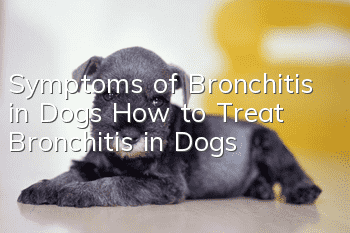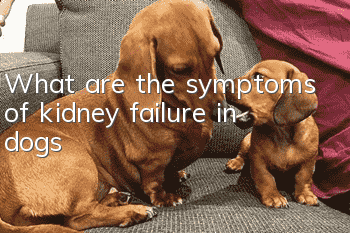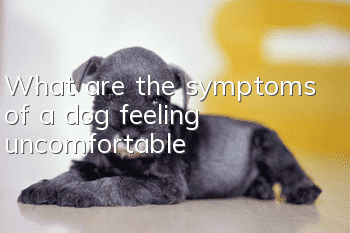Symptoms of Bronchitis in Dogs How to Treat Bronchitis in Dogs?

Symptoms of bronchitis in dogs
The main clinical features are flaccid fever, increased breathing frequency, cough, and localized pneumonia lesions in the lungs. Canine bronchopneumonia is an inflammation of the bronchi, bronchioles and pulmonary lobules caused by colds, physical and chemical factors, and certain infectious and parasitic diseases. The alveoli are usually filled with catarrhal exudate composed of epithelial cells, plasma and white blood cells, so it is also called catarrhal pneumonia. It is characterized by scattered areas of focal dullness on percussion and crepitus on auscultation. Puppies and older dogs are more affected, with the highest incidence rates in late autumn, winter and early spring.
Laboratory tests showed that due to similar symptoms of canine distemper and parainfluenza, rapid colloidal gold test results for CDV and CPIV were negative. Routine blood examination showed an increase in the total number of white blood cells and neutrophils, and a shift of the cell nucleus to the left. X-ray examination shows that the lung markings are aggravated and the shadows are small.
Treatment of canine bronchopneumonia
Canine bronchopneumonia is easily confused with canine cold, panbronchitis, canine distemper, and canine lobar pneumonia, so Before treating canine bronchopneumonia, a diagnosis should be made first, and then appropriate medicine can be prescribed to treat it. So how should canine bronchopneumonia be treated?
The treatment principles are to strengthen nursing, improve nutrition, antibacterial and anti-inflammatory, antitussive and expectorant, stop exudation and promote exudate absorption, and symptomatic treatment. One is antibacterial and anti-inflammatory. Subcutaneous injection: ① 0.9% normal saline + 7 mL of levofloxacin injection; ② Pulmonary rod dual antibody + ribavirin 25 mg; ③ Dexamethasone sodium phosphate 1 mg, once/d, for 3 days. The second is to prevent leakage. Intravenous injection: 20 mL of 10% glucose + 2 mL of 10% calcium gluconate, once a day for 3 days. The third is antitussive and expectorant. Oral administration: 1 mL of compound licorice mixture, 3 times/d. The fourth is symptomatic treatment. To reduce fever, intramuscular injection of 0.5 mL of Diazepam, or oral administration of 5 mg of Nimesulide is not necessary. It is not necessary if the body temperature does not exceed 39.5°C. The fifth is to strengthen care. Reduce the exercise of sick dogs, feed dog food, eat small meals frequently, supplement powerful multi-dimensional nutritional cream, immune polysaccharide cream, etc. to improve the body's immunity and promote recovery.
Precautions for dog bronchopneumonia
Treating dog bronchopneumonia is not difficult. It is mainly stimulated by inflammation of the bronchioles or bronchioles and pulmonary lobules caused by cold, physical and chemical factors, and certain infectious diseases and parasites. However, there are six points to note when treating and caring for canine bronchopneumonia.
1. Early diagnosis is the key to treating canine bronchopneumonia. If it is not diagnosed and treated in time, it can lead to aggravation of the condition and death in severe cases. Controlling and eliminating inflammation is the basic measure for the treatment of lobular pneumonia and must be implemented throughout the entire treatment process. The selection of antimicrobial drugs is the key to treating canine pulmonary infections. The pathogen cannot be determined in most cases, so when selecting antibiotics, both cocci and bacilli should be taken into consideration, and comprehensive considerations should be taken to establish effective empirical therapy. ConditionalDrug susceptibility testing can be done to select sensitive antibiotics.2. According to clinical observation, in the case of severe inflammation, animals may often enter a state of shock. A large number of treatment practices have proven that shock is the main cause of death in canine bronchitis cases. When dyspnea occurs or hypoxemia is suspected, oxygen should be inhaled as soon as possible (oxygen concentration is 30%) if possible. If mouth breathing continues and the ribs are inflamed, the prognosis is generally poor.
Three. Treatment of symptoms. Antonin or nimesulide can be used for high fever; oral codeine syrup can be used for severe chest pain; codeine or cough can be used for cough; phlegm can be used for moisturizing, mucolytic agents, ammonium chloride mixtures, acetylcysteine or chymotrypsin; water electrolyte balance can be used for MAI. Oral rehydration salts or infusion (control the infusion speed and total volume); aerosol therapy (early use) and formula can be used. For antibiotics, chymotrypsin, glucocorticoids, etc., add normal saline to 10-100 ml; for sedatives for cough, use licorice, cough syrup, etc. Early use of glucocorticoids can prevent cardiac and renal insufficiency and respiratory failure.
4. After the symptoms stabilize, the lung respiratory function will weaken, and there is still the possibility of recurrence in a short period of time. No strenuous exercise is allowed and please keep warm.5. The sick dog should be re-examined, and another chest fluoroscopy can be performed at a certain interval to monitor the recovery of the lungs and determine whether complications may occur.
6. The kennel and environment should be disinfected regularly. Disinfection is a key measure to cut off the spread of respiratory infectious diseases. It has the advantages of being simple, easy to implement, saving time and effort, and is as important as immunization.
- How many vaccinations should be given to adopted stray dogs?
- Causes of hypoglycemia in dogs
- Can dogs eat marshmallows?
- Can dogs rub their tummy when they have bowel borborygmire?
- Will dogs get heat stroke at home in summer?
- Why can’t dogs eat eggplant?
- What should I do if my dog won’t eat or drink?
- Is there any problem if the dog’s claws are red but the skin is not broken?
- Will a dog die if it pulls out white bugs?
- How long does it take for a dog to be active after being neutered?



